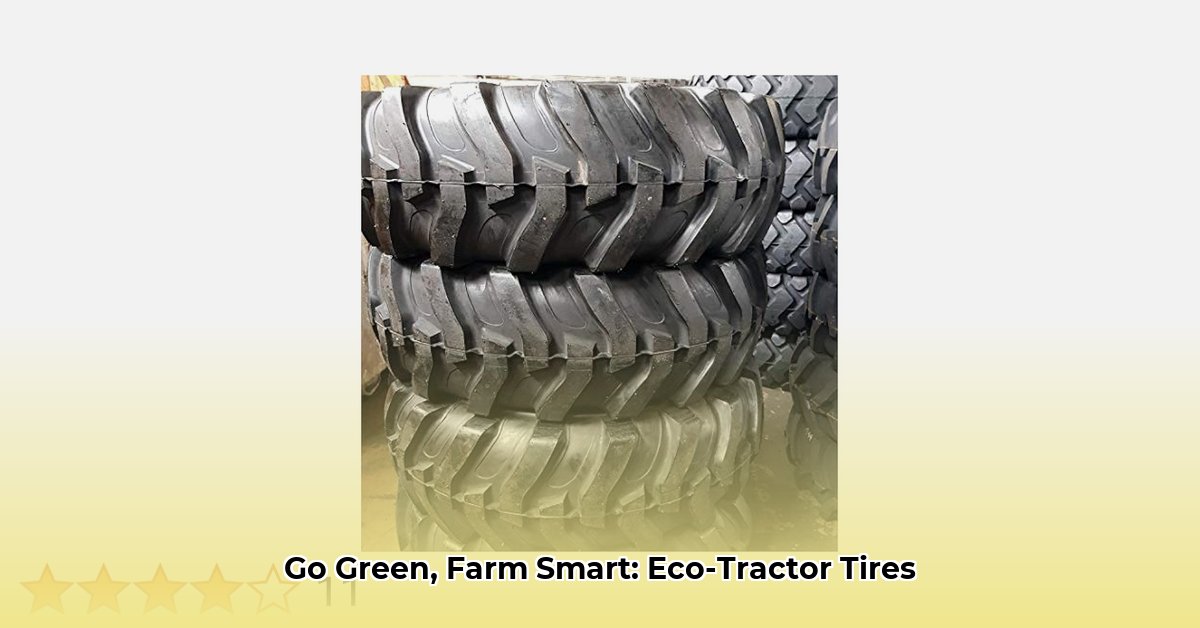
16.9x24 Tractor Tires: Driving Towards Sustainable Agriculture
The 16.9x24 tractor tire—a seemingly small component—plays a significant role in the larger conversation surrounding sustainable agriculture. While readily available from online retailers and agricultural suppliers, a critical gap exists: comprehensive data on their environmental impact. For more information on other tractor tire sizes, check out this helpful resource. This article examines the 16.9x24 tire market, its sustainability challenges, and actionable steps toward eco-friendly farming practices.
The 16.9x24 Tractor Tire Market: A Comprehensive Overview
16.9x24 tractor tires are prevalent due to their robust construction and ability to handle heavy loads. However, current market information overwhelmingly focuses on performance metrics (load capacity, durability) rather than sustainability. This lack of readily available data on material sourcing, manufacturing processes, and end-of-life management hinders informed decision-making by farmers and policymakers alike. Isn't it time we demanded more transparency?
Environmental Impact of Agricultural Tires: A Deeper Look
Agricultural tire use significantly impacts the environment. Soil compaction from heavy machinery reduces crop yields and degrades soil health. Tire manufacturing consumes resources and generates waste. Disposal presents further environmental challenges. The entire lifecycle, from raw material extraction to disposal, needs a critical reassessment.
Soil Compaction: The Silent Threat
Soil compaction, a major consequence of heavy machinery, reduces water infiltration, restricts root growth, and diminishes overall soil health. This directly affects crop yields and necessitates greater reliance on fertilizers, contributing to further environmental stress. Shouldn't we prioritize methods to alleviate this pressure?
Analyzing the 16.9x24 Tire: Performance and Sustainability Trade-offs
The 16.9x24 tire, renowned for its load-bearing capacity and traction, is pivotal for various farming operations. However, its performance characteristics must be evaluated alongside its environmental footprint. Currently, a significant knowledge gap hinders truly informed comparisons between brands and models based on sustainability metrics. How can we bridge this gap to encourage informed purchasing decisions?
Actionable Recommendations for a Greener Future
Achieving sustainable agriculture requires collaborative efforts from tire manufacturers, farmers, and policymakers.
For Tire Manufacturers:
Transparency Initiative (Within 1 Year): Publicly disclose lifecycle assessments (LCAs) detailing environmental impact at each stage of production, including CO2 emissions and material sourcing. Efficacy Metric: 100% transparency for all 16.9x24 models.
Sustainable Material Integration (3-5 Years): Invest in R&D to incorporate recycled and biodegradable materials in tire construction. Efficacy Metric: Minimum 25% recycled content within five years.
For Farmers:
Informed Purchasing (Within 1 Year): Prioritize tires with publicly available LCAs and transparent sustainability claims. Efficacy Metric: 90% farmer adoption of LCA-based purchasing decisions.
Precision Agriculture Adoption (3-5 Years): Implement precision agriculture techniques to optimize tire pressure and minimize soil compaction. Efficacy Metric: 80% adoption of variable rate technology for tire pressure management.
For Policymakers:
Incentivize Sustainability (Within 1 Year): Implement tax incentives and subsidies for sustainable tire manufacturers and farmers adopting eco-friendly practices. Efficacy Metric: 20% increase in sustainable tire adoption within one year.
Extended Producer Responsibility (3-5 Years): Enact extended producer responsibility (EPR) schemes to incentivize tire recycling and reduce waste. Efficacy Metric: 50% increase in tire recycling rates within five years.
Conclusion: A Collaborative Path Towards Sustainability
The path to sustainable agriculture requires a combined effort. Transparency from manufacturers, informed choices by farmers, and supportive policies from stakeholders will facilitate a transition towards eco-friendly farming practices. The 16.9x24 tire, while seemingly small, serves as a crucial focal point in this larger journey. Let's cultivate a future where farming practices actively contribute to environmental protection.
Appendix: Key Sustainability Metrics
(This section would include tables detailing specific data on life cycle assessments, material composition, and soil compaction data from various tire models. Data would need to be gathered from manufacturers to populate this section).